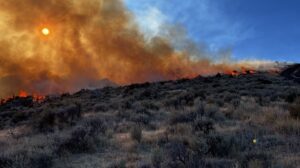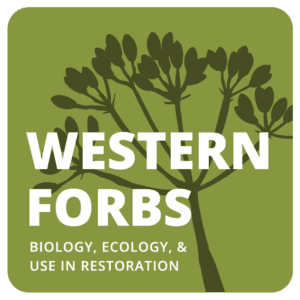Feature
Webinar recording.
Sam “Jake” Price and Matt Germino, USGS Forest & Rangeland Ecosystem Science Center, present findings from their recent publication on the Soda Fire fuel breaks and how they might help to break the annual grass-fire cycle. Q&A to follow the presentation.
View synthesis.
This review revealed tradeoffs in woody fuel treatments between reducing canopy fuels vs. increasing understory herbaceous vegetation (fuels) and fire behavior. In pinyon-juniper expansion areas, all treatments decreased crown fire risk. Prescribed fire and cut and broadcast burn treatments reduced woody fuels long-term but had higher risk of invasion. Mechanical treatments left understory vegetation intact and increased native perennial plants. However, cut and leave treatments increased downed woody fuel and high-intensity wildfire risk, while cut and pile burn and mastication caused localized disturbances and annual grass invasion. Ecological outcomes depended on ecological resilience; sites with warm and dry conditions or depleted perennial native herbaceous species experienced lower recovery and resistance to invasive annual grasses. In invasive annual grass dominated areas, high-intensity targeted grazing reduced fine fuels but required retreatment or seeding; in intact ecosystems with relatively low shrub cover, dormant season targeted grazing reduced fine fuel and thus fire spread. Preemergent herbicides reduced annual grasses with differing effects in warm and dry vs. cool and moist environments.
The Western Forbs: Biology, Ecology, and Use in Restoration project is now a website.
Westernforbs.org is designed to aid seed collectors, seed growers, nurserymen, landowners, restoration practitioners, and land managers as they increase the supply and use of native forbs.
- Species menu tab – Offers complete reviews that synthesize existing research and practical experience available for western forb species. Anything reported on the biology, ecology, seed technology, and use in wildland restoration is included.
- Lookup Table menu tab – Summarizes forb species data in a searchable and filterable table. Included are the data on taxonomy, distribution, biology, ecology, seed supply development, and nursery and wildland restoration knowledge for each species.




